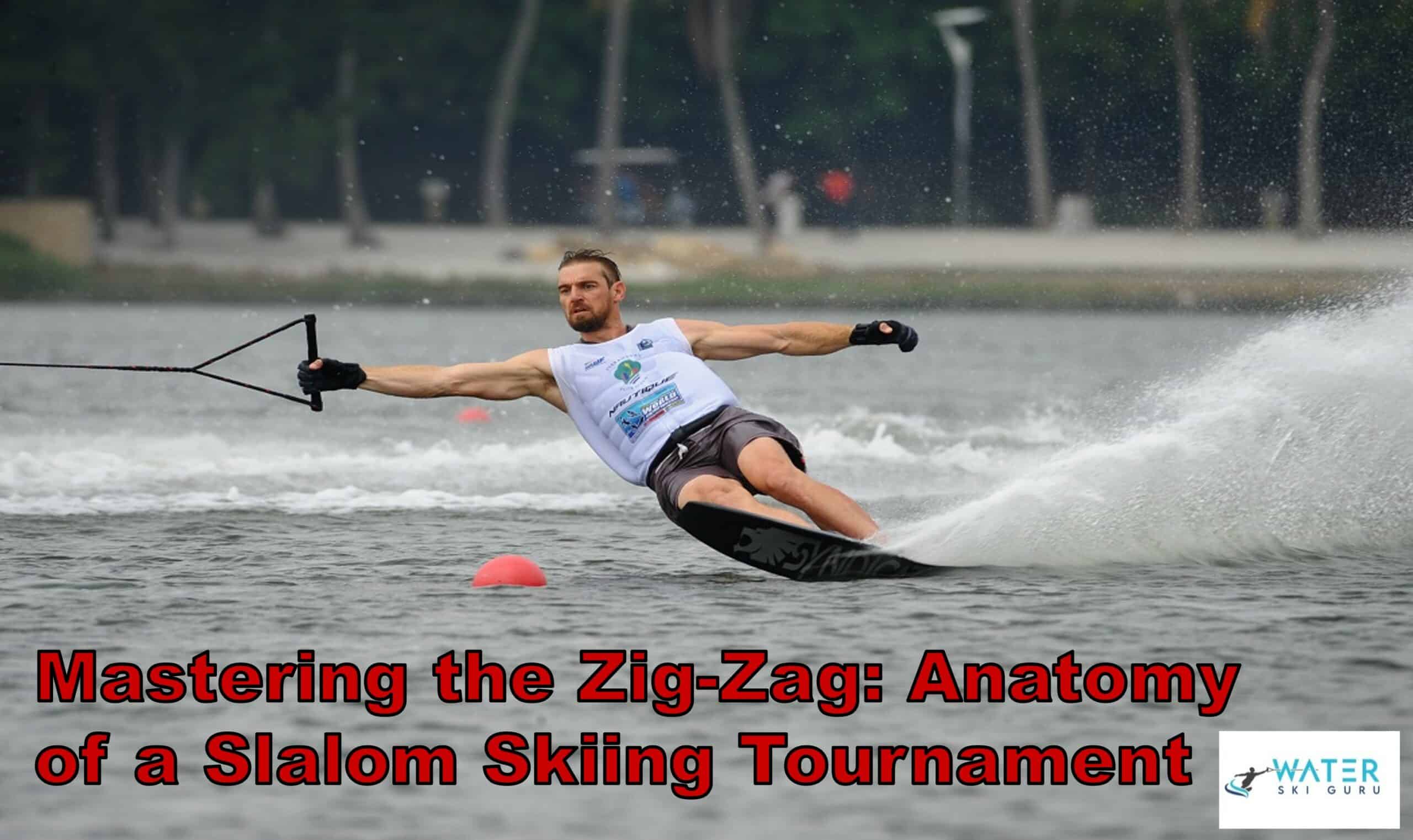It was just a coincidence that I stumbled upon slalom water skiing, but it quickly became my favorite sport.
There’s just something about the thrill of carving through the water, zig-zagging around turn buoys and pushing myself to go faster and faster.
But slalom water skiing isn’t just about speed – it’s also a test of skill and precision, requiring split-second decision making and flawless technique.
As I’ve competed in slalom skiing tournaments over the years, I’ve learned a lot about the anatomy of this exciting sport.
From the rules and scoring to the records and achievements, there’s a lot to know in order to successfully navigate the zig-zag and come out on top.
In this article, I’ll share my insider knowledge and tips for mastering the slalom skiing tournament, whether you’re a seasoned pro or a newcomer to the sport.
So buckle up, grab your skis, and get ready to master the zig-zag!
Concept of Three-Event Tournament
I really enjoy watching the three-event tournament in competitive water skiing, which includes the trick, jump, and slalom disciplines. Each discipline requires different skills, equipment, and techniques to master.
To compete in the tournament, skiers must have the right equipment, including a slalom ski, a trick ski, a jump ski, and a life vest. The slalom ski is the most important piece of equipment for the slalom discipline, as it needs to be designed to cut through the water at high speeds and provide stability during sharp turns.
To master the slalom discipline, skiers need to develop their strength, endurance, and technique. Training techniques include practicing on a smooth, calm body of water, starting with a longer rope length and gradually shortening it as skill improves. Skiers also practice cutting across the boat’s wake and maneuvering around the turn buoys.
Proper body position and weight distribution are crucial to maintaining balance and control while skiing. With consistent training and dedication, skiers can improve their skills and compete at the highest level of the three-event tournament.
Rules and Scoring in Slalom
Understanding the rules and scoring system is crucial when competing in the slalom discipline of competitive three-event water skiing. Here are some key points to keep in mind:
- Skiers must navigate around six turn buoys in a zig-zag pattern, and their final pass is scored based on the number of buoys cleared.
- Skiers can earn a quarter or half point for a buoy if they get outside and in front of it, but then lose control or fall before returning to the boat wake.
- To score the full point for a buoy, the skier must be in control of their ski when they cross the boat wake.
Rope length is shortened after each successful pass, and the winner is the skier who completes the most passes at the shortest rope length.
To master slalom techniques, skiers must train to maintain proper body position, make quick turns, and anticipate the boat’s movements.
Becoming skilled in slalom water skiing requires a lot of practice and dedication. Skiers must work on their technique and master the art of quick turns and maintaining proper body position. It’s also important to anticipate the boat’s movements and understand how to adjust to the changing conditions. With consistent training and a commitment to improving, any skier can become successful in the slalom discipline of competitive three-event water skiing.
Records and Achievements
Regina Jaquess, the current world record holder for the Open Women’s category in slalom water skiing, achieved an incredible feat by scoring 4½ @ 10.25m (41 off) at the Regina Jaquess Open II tournament in Tuscaloosa, Alabama.
This record-breaking performance showcased her mastery of the zig-zag pattern and her ability to ski around the six turn buoys with precision and control. To achieve such a remarkable feat, Jaquess must’ve undergone rigorous training techniques and utilized innovative equipment to enhance her performance.
Training techniques play a crucial role in mastering the zig-zag pattern in slalom water skiing. Skiers must focus on developing their strength, agility, and balance to maintain their position on the ski while navigating around the turn buoys. Additionally, skiers must refine their technique to minimize errors and improve their time.
Equipment innovations, such as high-performance skis and ropes, can also aid in achieving greater accuracy and speed. By incorporating these elements into their training, skiers can enhance their performance and achieve record-breaking results like Regina Jaquess.
Frequently Asked Questions
What is the history of slalom water skiing as a competitive sport?
Slalom water skiing has evolved from recreational skiing to a competitive sport. Notable athletes such as Bob LaPoint and Kris LaPoint have contributed to the sport’s growth. Evolutionary changes include boat speed and rope length modifications.
How do skiers train for slalom water skiing tournaments?
I’ve found that training for slalom water skiing tournaments requires a combination of physical fitness and mental focus. Techniques include drills for body positioning and gate timing, while equipment requirements include a high-quality ski and properly sized rope.
What is the role of the boat driver in a slalom water skiing competition?
As a boat driver in a slalom water skiing competition, my role is crucial. I must navigate the boat at a consistent speed and maintain a straight course while shortening the rope after each successful pass. Navigation techniques are key to ensuring a fair and safe competition.
What is the difference between slalom water skiing and other skiing disciplines, such as trick and jump?
Slalom water skiing differs from trick and jump disciplines in that skiers must navigate a zig-zag course around six turn buoys. Advantages include developing precision and balance. Training for slalom requires technique, strength, and mental focus.
How do weather conditions and water conditions affect a slalom water skiing competition?
Water temperature and wind speed can affect slalom skiing competitions. Cold water and strong winds can make it harder for skiers to maintain control and stay on course, while warmer water and calm conditions can improve performance.

